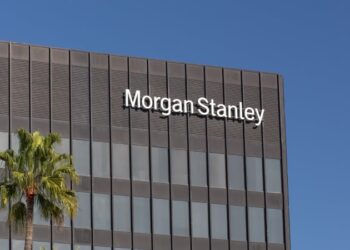The official cash rate was lifted for the 10th consecutive month following yesterday’s (7 March) meeting of the Reserve Bank of Australia’s (RBA) monetary policy board.
The central bank actioned a 25 bps increase, taking the cash rate to 3.6 per cent — the highest since May 2012.
Notably, the Reserve Bank’s post-meeting statement included key amendments to past language, hinting at an earlier than expected halt to the monetary policy tightening cycle.
Following its February meeting, the board said it expected “further increases in interest rates will be needed over the months ahead”.
However, its latest statement omitted the reference to “increases” or adjustments “over the months ahead”.
RBA governor Philip Lowe has now confirmed the central bank’s change of tune, confirming the likelihood of a near-term pause.
“We are closer to a pause and it’s a matter of logic really, as you increase interest rates higher you get closer to the point where it is appropriate just to stop for a while and just assess the flow of data,” he told the AFR Business Summit on Wednesday (8 March).
“We’ve done a lot in a short period of time and at some point, it’s going to be appropriate to sit still and assess the collective effects of that.”
Lowe said the board would carefully assess key economic data to be released ahead of the next board meeting, including monthly employment, inflation, retail spending, and business indicators.
“If collectively, they suggest that the right thing is to pause, then we’ll do that. But if they suggest that we need to keep going, then we will do that,” he added.
“So, we’ve got a completely open mind about what happens at the next board meeting.”
The shift in the RBA’s monetary policy stance comes despite continued hawkishness from global counterparts, including the US Federal Reserve.
Governor Lowe’s American counterpart, Jerome Powell, recently told the US Senate the “ultimate level of interest rates is likely to be higher than previously anticipated” in lieu of “stronger than expected” economic data.
“If the totality of the data were to indicate that faster tightening is warranted, we would be prepared to increase the pace of rate hikes,” Mr Powell added.
But when asked if the Federal Reserve’s monetary policy strategy would influence the RBA’s determinations, governor Lowe stressed the differences between US and Australian market conditions.
“Australia has some positives that a number of other Western countries don’t have — wages growth here in Australia is still not too high,” he said.
“There’s been a very big increase in labour force participation in Australia, were set a record high for women, young kids.
“So, right across the distribution, there’s been a big increase in labour supply in Australia. That’s not the case in the US.”
Australians, he added, are also more sensitive to monetary policy adjustments.
“The other consideration that we’re giving weight to is the fact that Australians have a lot of variable rate debt,” he said.
“In the US, when the Federal Reserve raises their mortgage rates, if you’ve got an existing mortgage, you don’t pay more. In Australia, you do.”
According to Lowe, Australia is better positioned than its global counterparts, but a re-escalation in inflationary pressures would have “implications”.
The Australian Bureau of Statistics’ (ABS) latest monthly consumer price index (CPI) reported annualised inflation of 7.4 per cent in January — well below market expectations of 8.1 per cent.
This represented a 1 per cent decline on the previous month, in which annualised inflation grew 8.4 per cent.
Meanwhile, wages grew 0.8 per cent in the three months to 31 December, slowing from 1.1 per cent in the previous quarter and falling below market expectations of a 1 per cent rise.
This coincided with weakness in aggregate economic activity, with GDP growth slowing to 0.5 per cent over the fourth quarter of 2022 — below market expectations of 0.8 per cent.
The December quarter result took annualised GDP growth to 2.7 per cent.







